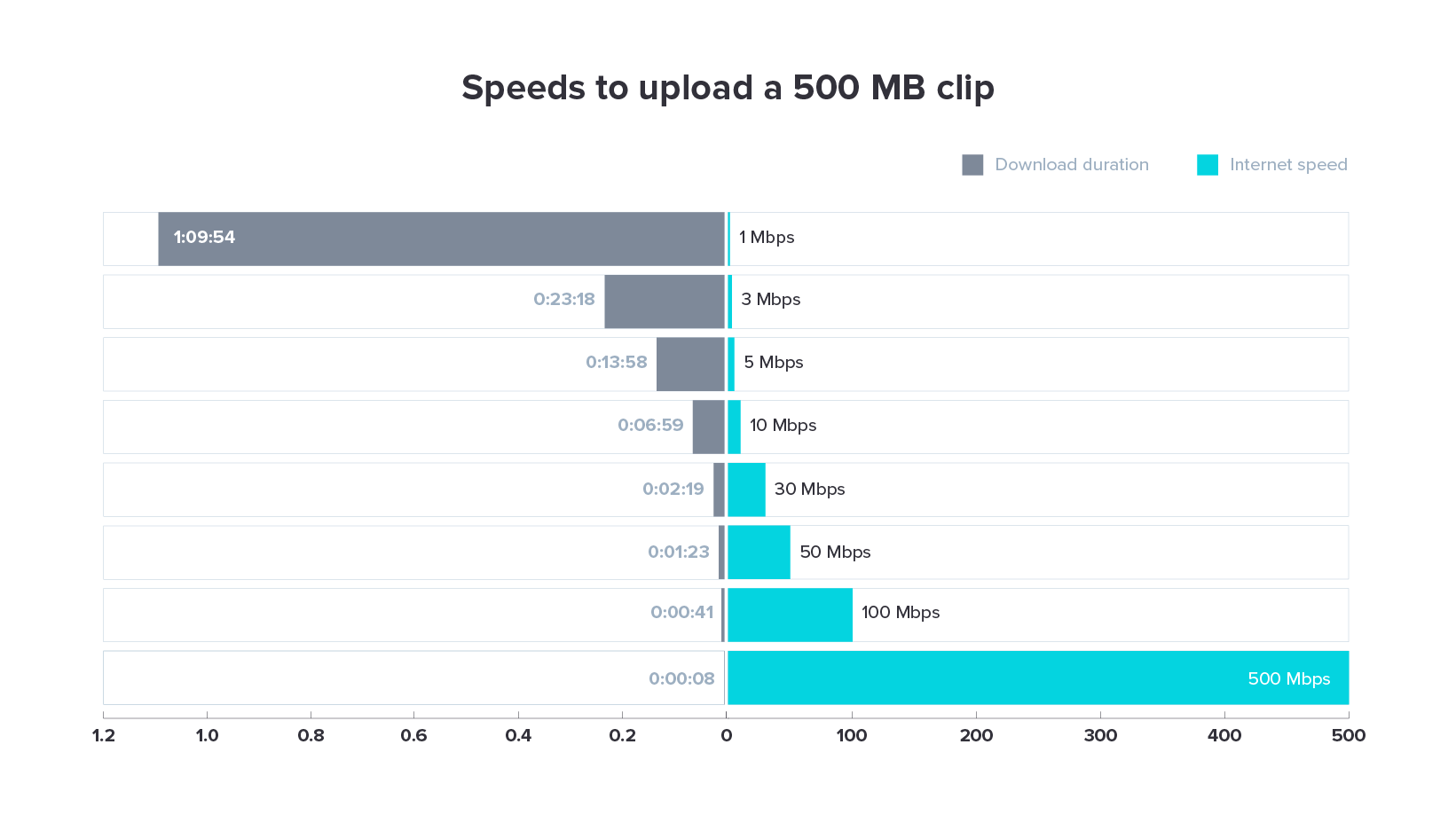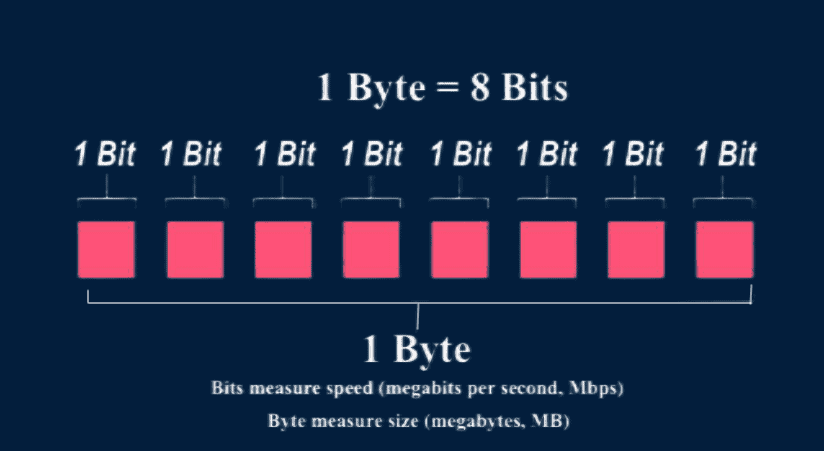The Influence of Megabits Per Second on Streaming Quality and Performance
The Influence of Megabits Per Second on Streaming Quality and Performance
Blog Article
Just How Megabits Per Second Impact Your Online Tasks
The concept of megabits per second (Mbps) plays a crucial duty fit our on the internet experiences. As digital tasks proliferate, recognizing the effects of Mbps on streaming, pc gaming, and video conferencing comes to be progressively important. Higher Mbps can boost performance and lower disturbances, while insufficient speeds may promote frustration and inefficiency. Evaluating your house's details demands in regard to these rates is vital, especially as multiple devices try data transfer. Yet, the nuances of how Mbps influences different online tasks require further exploration, especially as our reliance on digital connection continues to progress.
Understanding Megabits Per Second
When considering net speed, it's vital to comprehend the principle of megabits per second (Mbps), which works as a basic measurement for data transfer rates. This statistics measures just how much information can be sent over a net connection in one second, supplying a clear understanding of performance capacities - Megabits Per Second. For context, one megabit amounts to one million bits, and Mbps is frequently made use of to express transmission capacity for various on the internet activities
A higher Mbps indicates a much faster internet connection, making it possible for customers to perform tasks such as downloading and install data, surfing internet sites, and taking part in on the internet video gaming more successfully. For example, common browsing calls for around 1-5 Mbps, while streaming high-def video may demand 5-25 Mbps. Understanding these needs is critical for determining the suitable internet speed needed for particular tasks.
Additionally, the number of tools linked to a network can impact general performance. Multiple individuals streaming, pc gaming, or downloading at the same time can strain readily available transmission capacity, causing slower rates - Megabits Per Second. Reviewing personal online routines and needs is important in choosing a net plan that aligns with one's requirements, guaranteeing a smooth electronic experience
Streaming and Buffering Issues
Streaming high-def material has actually ended up being a staple of modern on the internet home entertainment, yet it is typically accompanied by irritating buffering problems. These disturbances can significantly interfere with the seeing experience, causing dissatisfaction and prospective loss of target market engagement. Buffering occurs when the information transferred from the streaming service is not obtained rapidly enough to keep a smooth playback, often because of inadequate net rate gauged in megabits per second (Mbps)

In addition, real-time streaming can be affected by network blockage, which takes place when numerous devices share the same data transfer. Optimizing link rate and making sure adequate Mbps is crucial for a seamless streaming experience. As streaming services proceed to advance, recognizing the impact of Mbps on buffering concerns continues to be critical for customers seeking continuous entertainment.
Online Gaming Efficiency
The effect of internet speed on on-line activities prolongs beyond streaming, significantly influencing online gaming efficiency. In affordable video gaming, reduced latency and high bandwidth are crucial for a smooth experience. A quick link decreases lag, allowing gamers to react promptly to in-game events, which can be the difference between triumph and defeat.
Bandwidth, gauged in megabits per go now second (Mbps), plays an important role in supporting multiple tools and video gaming platforms at the same time. Insufficient transmission capacity can bring about went down links or lowered game quality, adversely influencing gameplay. Online multiplayer video games call for substantial data transfer, particularly during peak video gaming hours when countless gamers are online.
Hectic first-person shooters demand greater rates to maintain responsiveness, while turn-based technique video games might work fairly well on lower speeds. As online video gaming continues to develop, with enhancing visual integrity and even more complicated multiplayer environments, the demand for higher Mbps will only heighten.
Video Clip Conferencing Quality
In today's electronic landscape, video conferencing top quality is greatly affected by net rate, specifically in terms of transmission capacity and latency. High-quality video clip calls need adequate original site bandwidth to transfer audio and video clip data flawlessly. Generally, a minimum of 1.5 Mbps upload and download speeds is suggested for basic definition video, while high-definition video clip conferencing usually demands a minimum of 3 Mbps.
Latency, or the hold-up in between sending and receiving data, also plays an essential function in the customer experience. Greater latency can lead to echo, lag, and disjointed interactions, which can impede collaboration and engagement during conferences.
Additionally, multiple individuals in a video meeting can stress available transmission capacity, requiring even higher rates. Network congestion, usually brought on by synchronised activities like streaming or downloading, can even more weaken video clip top quality. Hence, for companies counting on video conferencing for remote collaboration, understanding the relationship between megabits per second and total communication quality is crucial for maintaining performance and enhancing digital interactions.
Picking the Right Internet Plan
Selecting a proper internet plan is important for making certain optimal performance in different on the internet tasks, particularly in setups that demand high bandwidth, such as video conferencing and online gaming. Megabits Per Second. When taking into consideration a net plan, it is important to review both the rate and information allowance to match your certain usage demands
For homes with multiple individuals taking part Visit This Link in synchronised activities, a strategy offering greater megabits per second (Mbps) is recommended. Typically, a minimum of 25 Mbps is appropriate for common streaming and surfing, while plans going beyond 100 Mbps are more effective for even more extensive jobs. Additionally, consider the nature of your online tasks; video conferencing calls for a minimum of 1.5 Mbps post rate, while on-line pc gaming might need a lower latency yet regular link.
It is also essential to evaluate your data cap. Endless data strategies can protect against strangling and disruptions, specifically if hefty usage is anticipated. Research study solution companies in your area, as accessibility and rates can differ. By thoughtfully choosing a web strategy tailored to your demands, you can improve your on the internet experience, guaranteeing smooth, nonstop access to your favored activities.
Final Thought
In conclusion, the significance of megabits per second (Mbps) in forming online tasks can not be overstated. A complete understanding of individual or family Mbps demands is necessary for choosing an appropriate net plan that properly sustains varied online activities and user demands.

Typically, a minimum of 25 Mbps is appropriate for conventional streaming and surfing, while plans going beyond 100 Mbps are preferable for more extensive jobs. Furthermore, consider the nature of your online tasks; video conferencing calls for at the very least 1.5 Mbps upload speed, while on the internet pc gaming may require a lower latency but consistent connection.
Report this page